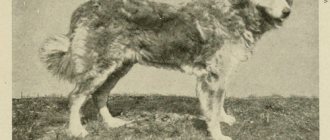Dobermans, Rottweilers and German Shepherds topped the lists of dogs that were considered dangerous in the recent past.
Pit bulls often make headlines these days, and that's rarely good news. Unless the story is a child assault or police shooting, it is a story of neglect or abuse.
The heat of such reporting created a terrifying image of a pit bull supposedly possessing a fiery temper and a bite with a clipped jaw.
But pit bull advocates say the dogs simply have a bad reputation. They say pit bulls are not naturally aggressive, but suffer in many cases at the hands of irresponsible owners who are attracted to the dog's macho image and encourage aggression for fighting and protection.
In fact, a well-socialized and well-trained pit bull is one of the most adorable, intelligent, and gentle dogs you can imagine.
In general, pit bulls are not aggressive toward people, but they are “less tolerant” of other dogs than many other breeds, says Pamela Reed, Ph.D., vice president of the ASPCA Animal Behavior Center in New York City.
They also have a sense of purpose. They direct their thoughts towards something and do it. This is what makes them great dogs for sports such as weight lifting.
History of the breed
The breed appeared in England as a result of crossing bulldogs and terriers. Bulldogs were first used for baiting animals, and when this was banned, they were often used to participate in dog fighting. But very quickly interest in this breed disappeared, since, despite their anger and aggression, the dogs were clumsy and rarely won tournaments. This led to the fact that bulldogs began to be crossed with more agile and agile breeds; in particular, a bulldog was crossed with a terrier, and a new breed was obtained - the pit bull terrier.
This breed of dog began to be used during dog fighting in America, even when it was prohibited: everything was carried out illegally. In this regard, from birth, puppies were raised as “killer dogs.”
The American Pit Bull Terrier was well suited to participate in fighting due to its characteristics - fast, aggressive and cruel. Such qualities were instilled in puppies from childhood.
After dog fighting was banned in America, active campaigning against this breed began and information appeared in the press about attacks by “aggressive” dogs on people.
If you raise a pit bull terrier from childhood as a guard dog, then you will get an excellent guard. Animals have a very keen sense of smell, so they are often used in their work by representatives of special services.
Now in some countries the breeding of this breed is prohibited. It is very popular in Russia and the USA, but quite strict rules have been created that must be followed when breeding and raising such dogs.
Five myths about pit bulls. Do you still believe in them?
The history of the breed goes back a little over a couple of hundred years. Compared to some Tibetan mastiff, which appeared long before the beginning of the countdown of our era, this is simply nothing. Despite the fact that long before pit bulls or simultaneously with them on different continents, the Germans, English, French, Chinese and God knows who else developed their lines of fighting dogs, only pit bulls were “lucky” to acquire the largest number of myths.
For some reason, not boxers, sharpeis or English bulldogs, which have the same serious roots, but pit bull terriers have become in the eyes of ordinary people a symbol of everything bad that is in a dog. If some of the prejudices associated with them are at least somewhat similar to the truth, then others are so absurd that you can’t help but wonder: damn, how does the earth even carry such monsters?
Fortunately, most of the stereotypes associated with this breed have no serious basis and are simply fiction. Putting aside outright nonsense, which is more appropriate to understand under the guidance of a good psychiatrist, it makes sense to consider the five most “true” tales about pit bulls that dog lovers regularly tell each other at evening get-togethers.
Myth One: Pitbulls have a “death grip” and their bite force is much stronger than most other dogs.
You will be surprised, but a pit bull's jaws function exactly the same as the jaws of all other dogs. No one has ever been able to provide hard evidence that there is any special locking mechanism that makes this dog's grip "dead." The neighbor's chatter, of course, doesn't count.
Discussions about the incredible bite force of pit bulls are generally puzzling, given the very modest size of this dog. Dr. Brady Barr of National Geographic found that domestic dogs have an average bite force of about 1,400 newtons. He tested the value of this parameter in three popular dog breeds: the German shepherd, the Rottweiler and the American pit bull.
As it turned out, the Rottweiler has the strongest jaws: it is capable of biting with a force of up to 1450N. The German Shepherd took an honorable second place, giving out almost 1100N, and the pit bull terrier, with its modest 1000N, turned out to be the weakest of the group.
Myth Two: Pitbulls are much more aggressive than other dogs.
Research has shown that, in general, pit bulls are no more likely to be aggressive than other dogs. Photo Mikorad/Pixabay
Aggression is a characteristic that varies from dog to dog regardless of breed, and the degree of its severity depends much more on the animal's environment and the actions of the owner than on the dog itself. If we judge with an open mind, then aggression towards other dogs can certainly be characteristic of pit bulls, but this behavior is not exclusively their prerogative.
After studying the behavior of 30 dog breeds, researchers from the University of Pennsylvania found that, as of 2008, chihuahuas and dachshunds were most likely to show aggression towards people and dogs. Pit bulls have proven to be some of the most aggressive towards other dogs, especially those they don't know, but they are no worse at treating strangers than many other breeds.
The American Society for Temperament Testing annually evaluates various dog breeds on stress tolerance, shyness, aggressiveness, friendliness and protectiveness. The average test pass rate among dog breeds tested by ATTS more than 200 times is 83.3%. The American Pit Bull Terrier and American Staffordshire Terrier pass the test 87% and 85% of the time, respectively.
There is evidence that the bad reputation of pit bulls, like some other dogs called “dangerous,” is contributed to by their owners, who are often themselves, in fact, “dangerous” people or “high-risk people.” A 2006 study published in the journal Interpersonal Violence found that owners of pit bulls and other “high-risk dogs,” such as German shepherds and Rottweilers, were more likely to have violent crime convictions.
Myth three: pit bulls are not trainable
Pit bull terrier Kia with his partner, police officer Justin Bruzgul. Stone Ridge, New York. 2015 Photo abc13.com
Funny? Me too. As intelligent animals, dogs need intellectual stimulation and love to learn. They don’t just like to receive information: it can be said without exaggeration that this is their vital need. Man himself created them this way.
Pit bulls are by no means an exception. They are no different from any other dog, and thanks to their strong ability to learn, they excel in a variety of areas, including sports, search and rescue, and even hunting. To be honest, bearing in mind the fighting past of this breed, in order to survive in a pit you also need to be able to learn.
I would venture to guess that rumors about the inability of pit bulls to learn are spread by those who have encountered difficulties and were unable to overcome them: like many other dogs, pit bulls are models of docileness, and working with them requires time and perseverance. Of course, not everyone is capable of this.
Myth #4: More people die from pit bull bites than from other dog breeds.
According to the Centers for Disease Control and Prevention, about 4.5 million dog bites are reported in the United States each year, but only about two dozen of them are fatal. Some data suggest that pit bulls are involved in the majority of fatal bites: for example, a 2009 study found that pit bulls, Rottweilers and German shepherds committed the majority of fatal attacks in Kentucky.
But it turns out that not everything is so simple. Already in December of the same year, the American Veterinary Medical Association, having conducted a comprehensive study of the statistics of fatal bites in the United States, came to a completely different conclusion. As the Association's specialists found out, a dog's breed can only be uniquely identified in 45 cases of attack, while more than 20 different breeds may be responsible for fatal bites.
It turns out that not only a pit bull, as they say. In August 2013, President Barack Obama spoke out against blanket legislation targeting certain specific breeds, issuing the following statement: “In 2000, the Centers for Disease Control and Prevention examined twenty years of dog bite data collected in the United States. They found that fatalities represented a very small proportion of total dog injuries, making it nearly impossible to calculate breed-specific bite rates.”
Myth five: pit bulls cannot get along with other animals and children
Pit bull terrier Sharkey with members of his very diverse family. Photo pinterest.es
Anyone who has ever watched Animal Planet's "Free with a Pit Bull" can easily argue with this. Perhaps those who note that it is not legitimate to cite a television show as an argument will be right. Maybe. But, on the other hand, such transfers are a real opportunity to make sure that several hundred dogs can live next to each other for a long time, without starting daily bloody showdowns.
All dogs are different, and one pit bull is as different from another as other breeds are different from each other. There are pitas who are quite jealous of members of the pack, to a certain extent considering them their property. But there are others, those who gladly accept not only dogs, but also other animals into the family.
Suffice it to recall the famous YouTube pit bull terrier Sharkey, whose friends included a cat, rabbits and even chicks. In my opinion, the inability of certain dogs to get along with certain animals cannot be considered a breed characteristic.
And finally: a pit bull will be (not) much more difficult than any other dog
I'm not as big a fan of pit bulls as you might think. Despite the fact that in the States, for example, they and Amstafs are considered the same breed, the latter, in my opinion, are more balanced in temperament, and therefore better suited for city life. However, this is just a matter of personal preference.
Undoubtedly, both the pit bull and the amstaff can become excellent companions, fitting perfectly into the family. Does this mean that the decision to adopt such a dog is undeniable? In no case. Buying a pitbull puppy has its downsides.
It's not even a matter of character. The main thing to remember is that many people are terrified of dogs of this breed. This means that you will likely face misunderstandings from friends and neighbors. Are you ready to endure?
You will have to make a lot of effort to destroy negative stereotypes. The surest way to do this is to include a properly raised dog in your daily life, showing everyone what a loving pet a Pit Bull Terrier can be.
Liked? Subscribe to my YandexZen channel and see pictures on Instagram.
© 2019-2022 Alexander Smirnov @kinologsmirnov.ru. Respect the work of the author: copying any part of the material is possible only with indication of authorship and a link to the source.
Gallery: American Pit Bull Terrier (25 photos)
Pit bulls have a much stronger bite force than other breeds or animal species.
Bite force is measured using pounds per inch (PSI). It is believed that pit bulls are especially distinguished from other dogs, their PSI reaches 10,000. National Geographic magazine conducted a study of the bite force of various breeds of dogs and other animals. At the top of the list are crocodiles with a PSI of 2500. Dogs are in the middle of the list, with an average PSI of 320. In studies that included large breeds of dogs, it turned out that the mastiff has the strongest bite. Behind him were a Rottweiler and a German Shepherd. In pit bulls, the bite force is only 71% of that of a Rottweiler, so the fear of strong jaws is largely irrational.
Pit bull terriers: description of the breed and its advantages
At first glance at a representative of this breed, it becomes clear that this is a strong, hardy and passionate dog, this is indicated by the following characteristics:
- strong jaws and wide cheekbones, which provide a powerful grip;
- the neck muscles are well developed, which ensures a smooth transition into the broad chest;
- the elongated muzzle and small eyes give the impression that the dog has a “prickly” look;
- strong physique;
- strong and slightly rounded legs;
- there is no undercoat, so the coat is hard, rough and short;
- there is no specific color, it can be white, black, brown;
- dogs height from 43 to 49 cm;
- weight ranges from 20 to 30 kilograms.
This is an excellent assistant who is always ready to protect your home, family and property.
The American Pit Bull Terrier is excellent for the role of a security guard; such dogs serve well in the police. Although representatives of this breed have a stern and intimidating appearance, for children they are the best and most affectionate nannies, since these dogs love to play with children and reliably protect them.
The American Pitbull has a death grip
It is believed that it is almost impossible to unclench a pit bull’s jaws when bitten. This makes it difficult to separate the dog from the object being attacked. In America, veterinarians at the University of Georgia conducted a series of studies in which the structure of the skull, jaws and teeth of the pit bull terrier was studied. The results demonstrated that all proportions were quite consistent with the functional morphology that is also present in other dog breeds. There is simply no scientific evidence that there are any locking or death grip mechanisms in pit bulls.
Features of caring for pit bulls
Since the dog does not have an undercoat, it is well suited for keeping in an apartment or in a private house. She needs to be walked often, she loves active games. If this is not done, the pit bull will gain excess weight very quickly.
Conveniently, dogs do not need to be brushed regularly, since they do not have thick and long hair. Keep an eye on the condition of your nails - if you regularly walk your pit bull, they will wear down on their own. If the nails grow beyond the pads, the dog will begin to limp, so they need to be trimmed in time.
How to choose a pitbull puppy?
There are several key aspects:
- Assessing the dog's appearance. It should not have any deviations or defects. Smooth and shiny coat of the correct color.
- Observation of behavior. If the puppy shows aggression, it is better to choose another baby.
- The optimal age for purchase is 8 months.
- You should only purchase from official breeders. Under no circumstances should you deal with unscrupulous resellers who sell dogs second-hand.
- Take an interest in the dog's pedigree. This will help eliminate hereditary diseases and a tendency to inappropriate behavior.
- Check for vaccinations and ask what food the puppy is already accustomed to.
- Prepare a collar, leash, muzzle and toys. Make a comfortable place for him to live in the house.
- And finally, come up with a name. Here you can show your imagination and name the boy puppy: Archie, Rex, Dexter, Rich, Luke, Baron, Gray, Caesar, Stiff, Heidi. If you have a girl, then the following names will suit her: Jessie, Isa, Aisa, Beta, Bertha, Amber, Gretchen, Gretta, Sherry, Lucky, Ilsa, Taya, Helga, Chelsea or Elba.
Share link:
Click to rate this post!
[Total: 1 Average: 5]
Rules for feeding and raising puppies
A pit bull terrier dog must receive a balanced and proper diet; it must contain minerals and vitamins. To do this, you can use dry or natural food, plus you must adhere to a daily routine.
You cannot force your pet to eat; pay attention to foods that the dog does not like and try not to give them . Some owners try to teach the dog to eat everything by starving it, but this is strictly prohibited.
It is recommended to feed the pit bull terrier 4-5 times a day in small portions. This must be done at the same time. There should be separate dishes for eating, and the dog should always have fresh water. Breeders often recommend using dry food, as this simplifies the feeding process. Make sure that it is balanced and contains vitamins and microelements.
Be sure to carry out the necessary vaccinations for puppies and protect their bodies from parasites.
Pit bulls fighting with new acquaintances cannot be prevented
You should introduce your pet to new dogs with extreme caution. They should not be allowed to dominate the pit bull even in the game. In such fun, you should remove those items that can provoke a quarrel - treats, toys. As a result, a pit bull can live quite calmly side by side with other animals, you just need to follow some rules and not leave the dogs unattended. It is worth remembering that even those who recently seemed to be best friends can fight, and the outcome can become tragic. This rule also applies to dogs that have lived side by side for several years. Often after the first serious battle, the relationship between the dogs changes. So, if you want to maintain good relations between dogs in the long term, you just need to prevent the first serious fight. If several dogs live together, then in the absence of people at home, it is important to separate the dogs from each other. If it is not possible to use cages or enclosures, then you need to separate the pets at least into different rooms. Such methods are as simple as they are reliable and safe. Pit bulls are known to get along well with cats, ferrets and rabbits. However, for safety reasons, leaving them alone unattended is still not a good idea.
What can you feed your dog and what should you not give to adult pit bull terriers?
Many owners feed adult dogs, as well as puppies, high-quality dry food. Don't try to save on your pet's health.
Some owners prefer to feed pit bull terriers natural food, and the diet must include boiled or raw meat, beef is best, you can give boiled fish, but it must be boneless.
Three times a week, the pit bull should be given one boiled egg, cereals are given only in the form of porridge, it is best if it is rice, buckwheat or oatmeal porridge. An adult pet can be given cottage cheese, and cheese only as a treat; The diet must include fresh vegetables and fruits.
The pit bull is aggressive towards animals and can be similarly aggressive towards humans.
In fact, many working breeds have an aversion to certain animals. Thus, hounds simply begin to go crazy as soon as they see a raccoon, fox terriers rush into a fox hole without hesitation, and greyhounds love the chase. Even seemingly good-natured beagles turn into dangerous predators at the sight of rabbits. But no one would suspect these working breeds of being unfriendly to humans. The same situation is with the pit bull. For many years the dog was trained to attack other animals, but not people. A properly raised dog of this breed is usually loyal to people, especially children. If you see a pit bull grinning and growling, threatening to attack people who are neutral towards its owner, you should know that this behavior is not typical for the breed as a whole.
Pitbulls don't feel pain
Breeders often report that pit bulls have a high sensitivity to pain, or no pain at all. In fact, all dog breeds have similar nervous systems. It allows them to feel the same painful sensations as a person. So don’t assume that your pit bull doesn’t feel pain. This opinion comes from the ability of this breed to act even under conditions of extreme physical stress. The fact is that pit bulls were originally bred to have a high level of courage, which means they are focused on completing their task even despite physical discomfort. Although many people believe that nothing can stop a pit bull and will not complain of pain, in fact, such behavior is a direct sign of the breed wanting to complete the task and please its owners.
How long does a dog live?
American pit bulls are naturally in good health, but the quality of life and further condition of the pet depends on the care and attitude of the owner. On average, the lifespan of pit bulls is thirteen to fifteen years .
To read: Choosing the best and individual nickname for Toy Terriers boys and girls
When there were battles in the arenas, the dog died either from overwork or from injuries. Nowadays, under good conditions, pitas can live three years longer than expected. In order not to cause any disease, do not forget to undergo preventive examinations with a veterinarian twice a year.
Size and weight
The UKC standards do not specify parameters such as size and weight. But there are other systems in which it is customary to monitor the pet’s weight and growth literally month by month.
- immediately after birth, the scale should show from 250 to 500 grams,
- in the first month of life – from 2 to 4 kilograms,
- in the second month – standard from 6 to 9 kg. Height – from 25 to 30 cm,
- at three months the weight should be no more than fourteen kg. Height increases to 30-36 cm,
- at four months the weight can already be twenty kg, and the height reaches forty-four cm,
- at five months, the permissible weight is twenty-five kg, and the maximum height approaches forty-six centimeters,
- a six-month-old puppy weighs from nineteen to twenty-eight kg. Height can vary from 38 to 48 cm,
- at nine months, growth is from 42 to 50, and from 28 to 46 kilograms.
By the year the dog has grown to the level at which it will most likely stop. In rare cases, a dog can grow another couple of centimeters by the age of one and a half years. The maximum height of an adult is fifty centimeters. The maximum weight for an adult is set at forty kilograms.
The number of people bitten by bull terriers is much higher than from other breeds
It is this myth that is to blame for most people’s fear of this wonderful breed of dog. Responsible for this are media sources who love to inflate scary stories. News about people being horribly bitten by bull terriers is most often exaggerated by the press. In fact, in that America today there is simply no system that would allow all cases of dog bites or attacks to be separated by breed. The Centers for Disease Control studied cases of dog attacks from 1979 to 1998, according to the American Humane Organization. Research has confirmed that it is difficult to determine the specific breed of dog for each of the attacks, and in addition, owners preferred to remain silent about many cases of attacks in the house. Thus, it is not clear what served as the basis for such a statement.











